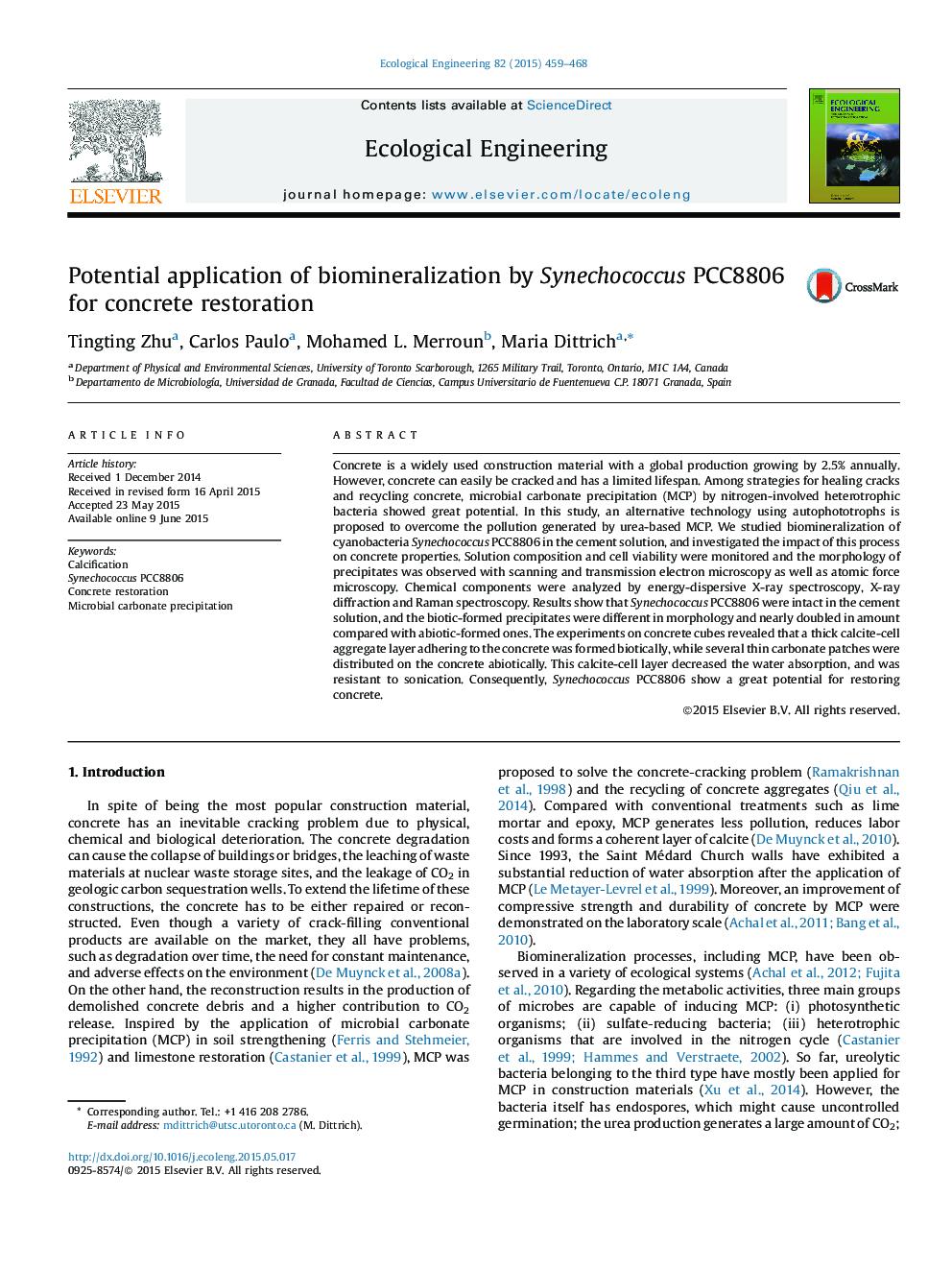| کد مقاله | کد نشریه | سال انتشار | مقاله انگلیسی | نسخه تمام متن |
|---|---|---|---|---|
| 4388995 | 1618017 | 2015 | 10 صفحه PDF | دانلود رایگان |

• Synechococcus precipitates 38% more carbonate than in the abiotic condition.
• Bone and petaloid-shaped calcite aggregates were formed closely around the cells.
• Si, Al, O, Mg and Mn from the cement solution were precipitated around the cells.
• The microbial calcite layer was thicker, more cohesive and less water-absorbable.
Concrete is a widely used construction material with a global production growing by 2.5% annually. However, concrete can easily be cracked and has a limited lifespan. Among strategies for healing cracks and recycling concrete, microbial carbonate precipitation (MCP) by nitrogen-involved heterotrophic bacteria showed great potential. In this study, an alternative technology using autophototrophs is proposed to overcome the pollution generated by urea-based MCP. We studied biomineralization of cyanobacteria Synechococcus PCC8806 in the cement solution, and investigated the impact of this process on concrete properties. Solution composition and cell viability were monitored and the morphology of precipitates was observed with scanning and transmission electron microscopy as well as atomic force microscopy. Chemical components were analyzed by energy-dispersive X-ray spectroscopy, X-ray diffraction and Raman spectroscopy. Results show that Synechococcus PCC8806 were intact in the cement solution, and the biotic-formed precipitates were different in morphology and nearly doubled in amount compared with abiotic-formed ones. The experiments on concrete cubes revealed that a thick calcite-cell aggregate layer adhering to the concrete was formed biotically, while several thin carbonate patches were distributed on the concrete abiotically. This calcite-cell layer decreased the water absorption, and was resistant to sonication. Consequently, Synechococcus PCC8806 show a great potential for restoring concrete.
Figure optionsDownload as PowerPoint slide
Journal: Ecological Engineering - Volume 82, September 2015, Pages 459–468